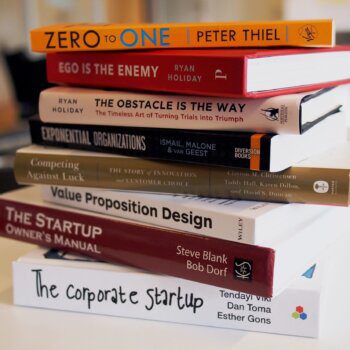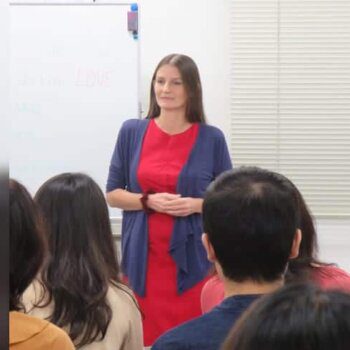Smartphones have emerged as the exemplar of mankind’s quest for shrinking technologies. They embody the realization of a simple premise – that computing devices would do more and cost less. This realization has been responsible for modern society’s profound transformations in communication, governance, and knowledge distribution.
The launch of the iPhone in 2007 is often credited with ushering in an era of smartphones. Ever since, the world’s best tech R&D has focused on increasing the capabilities of these devices. And as a result, less than a decade later, we have sub-hundred dollar smartphones. The low-cost smartphone has found an enthusiastic and insatiable market in developing countries, especially Asia. India is no exception to the Asian narrative – Micromax, Spice, and Lava (low cost smartphone manufacturers) are household names in the Indian smartphone market, which accounted for 65% of internet traffic in 2014.
The Indian Prime Minister, carrying the twin aspirations of catalyzing the growth of indigenous manufacturing and bridging the digital divide, launched the “Digital India” and “Make in India” campaigns last year. During his US visit, Google, Apple, Microsoft, Facebook extended their support to the campaigns’ vision. The campaigns outline the government’s elaborate initiatives to bridge the digital divide and build indigenous manufacturing capacity. While all these developments bode well for the indigenous smartphone, there remain some serious concerns affecting the growth of the industry – for instance, patent infringement litigations and the absence of clear legal and regulatory solutions.
From the state of the industry and its implications, it can be concluded that: first, growing access to smartphones has been influenced by their phenomenal affordability; second, smartphones are an excellent example of technology for development and a facilitator of access to knowledge; and third, domestic smartphone production has occurred in an imprecise legal and regulatory environment.
This article attempts to build an appreciation for the role that smartphones are playing in development, specifically, by fostering Access to Knowledge. Conversations around development by public-interest groups and emerging industries often espouse Access to Knowledge to address concerns in international development, communications, technology, education, and intellectual property policy. Whereas the principle can be regarded as in-theworks, two theories inform us about the role of mobile phones in fostering Access to Knowledge. Lea Sheaver’s theory classifies mobile as an Access-toKnowledge good. Lea enumerates the five key components of a robust Access to Knowledge framework, viz., education for information literacy, access to the global knowledge commons, access to knowledge goods, an enabling legal framework, and effective innovation systems. According to her, affordability of the good is the ultimate indicator of its efficacy as an access to knowledge good. Furthermore, inventions in microchip technology, electronics manufacturing, and software need to be supported by enabling legal and policy frameworks coupled with effective innovation systems.
Yochai Benkler’s framework classifies mobile-devices as both informationembedded goods and information-embedded tools. He says, “Information-embedded goods are those goods which are ‘better, more plentiful or cheaper because of some technological advance embedded in them or associated with their production,’ such as medicines, movies, and improved crop seed. Information-embedded tools, in turn, are those technologies necessary for research, innovation, and communication of knowledge”. A smartphone qualifies as both because it can be used to obtain knowledge, and it depends on discoveries in microchip technology, electronics manufacturing, and software to function.
To date, there has been no formal, theoretical or evidentiary investigation on the emergence of smartphones as an Access-to-Knowledge good. In the following sections, I will attempt to explain the smartphone’s dependence on an enabling legal framework and effective innovation systems (Lea’s components). It must be borne in mind that globally, discussions affecting access to knowledge have aimed at creating balanced and inclusive systems related to intellectual property. Therefore, the article will focus on: first, the relationship between constituent mobile technologies and intellectual property as a function of production/deployment of smartphones in India; and second, the relationship between innovation and access.
Creating an Enabling Legal Framework to Foster Access to Knowledge
The adage “the only lesson you can learn from history is that it repeats itself” is worth bearing in our narrative. The emergence of the smartphones industry in Asia has commonalities with the flourishing Asian piracy trade – which remains an essential access solution for low-income societies constantly barraged by expensive western media goods. The prohibitive cost of acquiring brand-name devices (e.g. Apple, HTC, Samsung, Sony) drove local production to imitate and innovate cheaper substitutes. This occurred within the lenient and flexible intellectual property regimes prevalent in Asian countries, which continue to be constantly criticized for their failure to enact stricter intellectual property law. The hubs of smartphone production – China, Taiwan, and India – have flexible intellectual property protection law and lax enforcement measures.
Concerns of intellectual property center around patent and copyright legislation, which have yet to be fully developed to address intellectual property in high-tech industries (since trademark issues remain unchanged, they will not be discussed in the article.) As a result, constituent smartphone technologies have been shaped and governed by a blend of formal and informal rules and legal and illegal practices. This is why they are often referred to as “gray market” technologies. A smartphone in terms of constituent intellectual property can be broadly divided into hardware and software technologies. This piece will first deal with hardware, followed by software technologies.
Hardware Technologies and Their Relationship with IP Law
Presently, most Indian manufacturers import hardware from China and Taiwan, and assemble the phones in India. A few key Indian domestic players are Maxx Mobile, Intex, Spice, and Lava, whose dominance have not gone unnoticed by foreign manufacturers. A couple of these domestic manufacturers are now embroiled in patent litigation threats or infringement suits. And as litigation piles up in Indian courts, the judiciary is slowly waking up to mobile patent litigation, but is yet to rule comprehensively. To make matters worse, the jurisdiction of the Indian antitrust regulator remains unclear, and to a certain extent overlaps with the judiciary, adding to the ambiguity. For instance, when an appellate court ruled in favor of the Swedish tech-giant Ericsson, it ordered Micromax to pay a flat 1.25 – 2% of its devices’ selling price to Ericsson. The ruling was devoid of a more rational and reasoned approach developed by courts of other jurisdictions in similar matters, which prescribed that the infringers pay damages based on the price of the patented components only, and not the retail price of the phones. This decision risks causing a significant increase in the price of phones and potentially threatens local innovation.
The Indian government’s Make in India and Digital India campaigns aim to fulfill the vision of a digitally empowered India, and the 2015 Indian Union budget also targets boosting the electronics manufacturing industry. Despite these broad initiatives, there needs to be a more focused policy in place to ensure domestic companies do not get weighed down by patent related concerns. The root cause of litigation is the vesting of a majority of critical mobile patents (Standard Essential Patents, or SEPs) by a handful tech-giants. For instance, Qualcomm owns 5700 patents around CDMA technology (qualcomm.com). In another instance, the DVD format constitutes 311 SEPs for DVD players and 272 SEPs for DVD recorders. Such a dense concentration of patents around SEPs creates a patent thicket and thereby compels Smartphone manufacturers to acquire multiple licenses, and to pay high transaction costs and huge royalties to the owner. To reduce conflict and protect domestic players from being arm-twisted into paying high royalties, the government can potentially identify critical technologies and initiate the formation of a patent pool of such technologies. The concept of a patent pool mandates that the patent holders issue licenses on fair, reasonable, and nondiscriminatory basis to interested parties. However, a nuanced and cautious approach to setting up such pools is necessary.
There are interesting lessons in China’s steps to encourage local innovation of Smartphone hardware as well, specifically in the form of standardized technologies. The Chinese government has actively supported the development of indigenous standards to shield domestic manufacturers from royalty exposure. In fact, the China Blue High-definition Disc (CBHD) standard was built as an alternative to the Blu-ray disc and was duly adopted by the Chinese government, which reportedly caused the royalty rates for the Blu-ray format to dip. Much later, Warner Bros, Paramount, and other motion picture producers adopted the CBHD standard as well for distribution in China.
Software Technologies and Their Relationship with IP Law
Unlike hardware technology, where India is struggling to build manufacturing capacity, the success of the Indian software industry has already been realized. The software-as-a-service (SaAS) industry is led by Infosys, TCS, and Wipro in software exports. The prevailing trend in the industry since the 1980s was to assign ownership of their products to offshore clients. However, in the past decade, there has been a conscious shift by the Indian software development workforce to build products for Smartphone platforms. This is in response to the shift in local populations to accessing content and services online. Reports indicate that India has the second largest population of mobile applications developers (approx. 3 million) in the world, second only to the US. The Indian government has recognized the potential of mobile application-based ventures and created funds to encourage app development in India.
Intellectual property protection around software is fairly ambiguous. A piece of code is potentially capable of gaining both patent and copyright protection. In the area of mobile application development, preliminary research findings indicate that coding occurs with an agnostic attitude towards intellectual property laws. One of the reasons is ambiguity on a multitude of issues around the protection of software because Indian legislation on patent and copyright is frustratingly insufficient. There is a growing discontentment about long-term patent protection over software code, which could be detrimental to innovation – particularly, to the start-up segment of software industry. In more technologically advanced economies, software patenting has emerged as a scourge – last year, the US Supreme Court in Alice Corporation Pty Ltd v. CLS Bank International Et Al narrowed the eligibility of software inventions to gain patent protection. The activist discourse has shifted in favor of eliminating software patenting because of the incremental and obsolescent nature of a software invention. However, in a recent disappointing move, the Indian patent office widened the scope of patent-eligible subject matter for software-related inventions – a move that was decried by free software activists and industry alike. This widening of scope can only benefit tech-giants in building bigger patent portfolios, which is unnecessary and unhealthy for innovation by small and mid-tier entities.
Effective Innovation Systems
Innovation ensures fresh creation of knowledge. A society cannot premise itself on the mere importation of knowledge; it must also strive to use the knowledge to meet its own local needs and environment. Innovation depends on a variety of factors – there is no singular path or factor to build an innovative and enterprising society. The patent system is often incorrectly credited with “promoting” innovation. The discourse around innovation was extremely patent-centric until studies disproved the assumptive correlation between high patenting activity and innovation. Continuing in the same vein, Lea states, “From the A2K perspective, however, relying on patents – which represent the right to exclude others from access to the innovation – is particularly problematic. Patents likely represent the segment of innovation of least value for expanding access to knowledge: improvements in the knowledge stock whose application is limited by exclusive property rights”.
In this framework, it is also important to shed light on the growing movement of openness. Openness as a movement has been captured by various fields – Big data, software, education, media, etc. Free and Open Source Software has emerged as a key agent in information technology policy-making in India, with the Indian government adopting an open standards policy and an open software policy for its own purposes.
In the context of smartphone technologies, preliminary findings also support the shift towards openness. Industry participants have observed that openness will lead to greater benefits in private production of hardware technologies. Similarly, mobile applications developers have also voiced support of open source software.
Conclusion
The discussion above identified a limited set of legal and regulatory concerns affecting the state of production/deployment of smartphones in India. These issues and findings are backed by preliminary research, and purport to sustain the emergence of the smartphone as an enabler of access to knowledge. The proposed solutions direct industry and the government alike to take immediate steps to fix problems impeding pervasive access to this knowledge good.
The experience of the smartphone industry with an imprecise legal and regulatory environment, akin to piracy, has thus far been a success story of affordability, quality substitution, and innovation. However, this narrative is now threatened by messy litigation, jurisdictional uncertainties between the anti-trust regulator and judicial system, SEP licensing issues, rise of software patents. Despite these issues, the industry continues to grow. The future of access to knowledge is therefore bright, provided that stakeholders make efforts to meet the needs of this emerging industry and the public, including development and consumer interests.
________________________________________________
About the Author
This article was written by Anubha Sinha of The Centre for Internet & Society. Anubha is a Programme Officer at CIS. As part of the Pervasive Technologies Project, she works on issues involving intellectual property law and openness. see more.





























